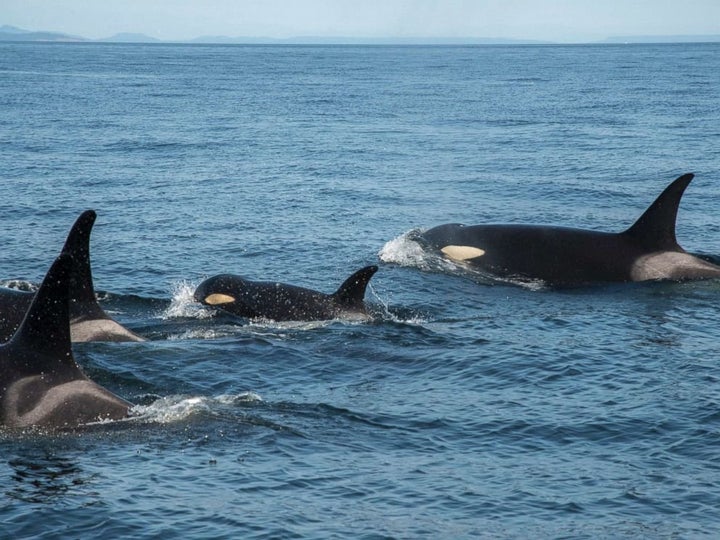Marine biologists missed a salmon delivery to a critically malnourished young orca off the coast of Washington on Friday, but hope to try again soon.
The good news is they spotted the whale Saturday and said she appeared “active and energetic” — though still emaciated.
Scientists from the National Oceanic and Atmospheric Association had loaded live chinook salmon on two boats to feed the three-year-old orca, identified as J50, or Scarlet, on Friday. But they failed to spot her in U.S. waters and were not authorized to feed her in Canadian territory, The Seattle Times reported.
Researchers don’t even know if the young orca will eat the live fish; it’s an unprecedented scientific move to feed free-swimming whales. If it works, however, they may use the fish to deliver future medications to the orca. They did drop fish in a test-feeding for another whale, AP reported, but tests have yet to determine if the animal ate the salmon.
The grossly underweight juvenile was first observed weeks ago with her ribs clearly visible. She is part of the southern resident orca “baby boom” that occurred when 11 calves were born between 2014 to 2016. Only five of them survived. The southern resident orcas off the Pacific Coast are on the brink of extinction. The problem is so dire that NOAA has launched its first ever attempted orca rescue.

J50 is in the same pod as J35, a mother orca — also known by scientists as Tahlequah — that has carried her dead calf for at least 17 days in a heartbreaking effort to continue to care for the newborn. NOAA scientists spotted her Saturday, and didn’t see the dead calf, but said visibility was poor. It’s not known why her calf died.
Microorganisms that cause disease have been found in fecal samples collected from Scarlet, meaning she may be suffering from an illness or infection as well as starvation. NOAA researchers got close enough to the whale near San Juan Island on Thursday to inject her with an antibiotic via a fired dart.
They were also able to collect a breath sample, and watched her swim and dive, leading scientists to conclude that Scarlet wasn’t suffering from a respiratory problem.
Scientists noted in a tweet that “while very skinny and small, J50 kept up with her mother and siblings.”
Still, J50 is a “very thin whale,“ Vancouver Aquarium veteranarian Mary Haulena told The Seattle times. “The facts remain that other whales that have been in this condition have not survived.”
The whale is so small that she appears to be much younger than she is and shows signs of serious tissue loss.
The orca population has been decimated by ship traffic, toxins in the ocean, and the disappearance of the orcas’ main food source, chinook salmon.
The total number of southern resident killer whales is now just 75. The last successful birth occurred in 2015. A 2017 study found that two-thirds of orca pregnancies failed over a seven-year period. Researchers attributed the failed pregnancies to a lack of salmon.
